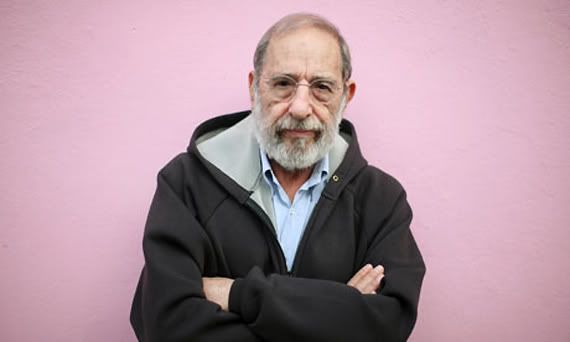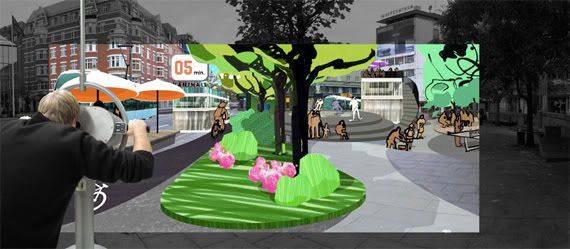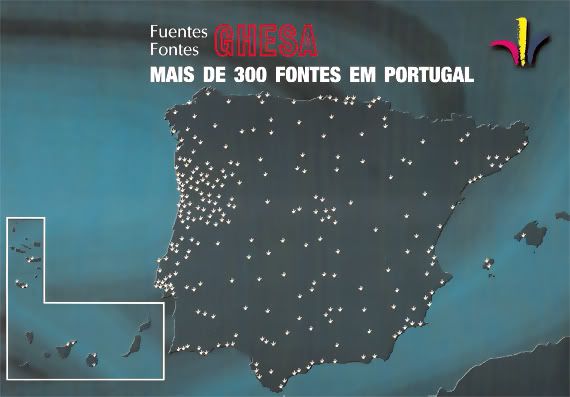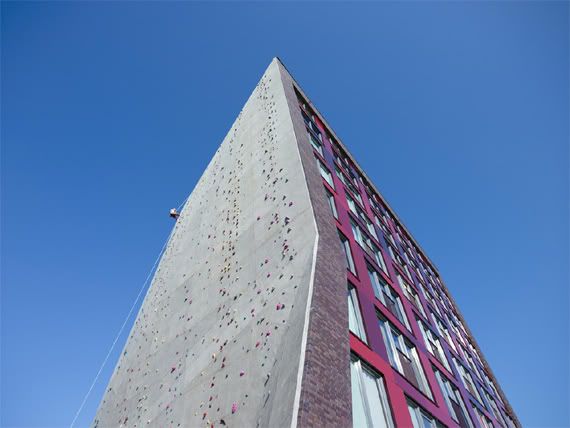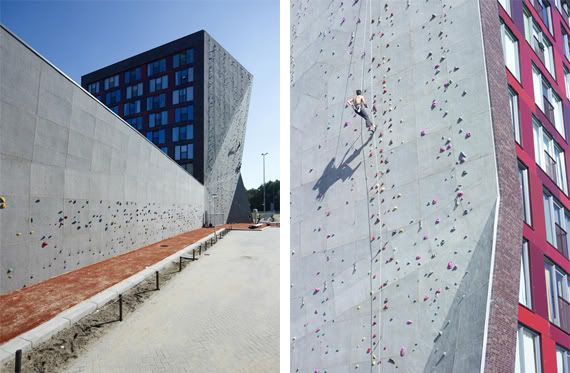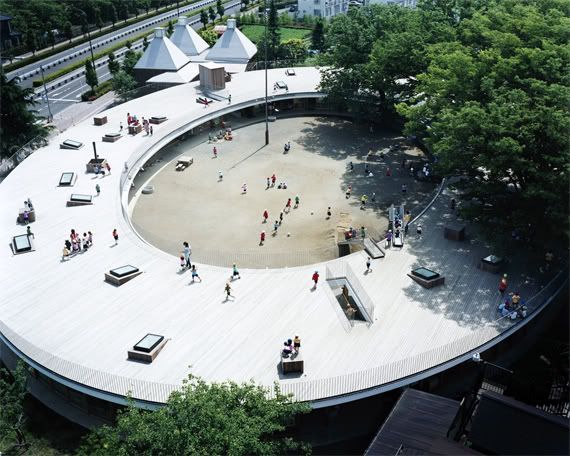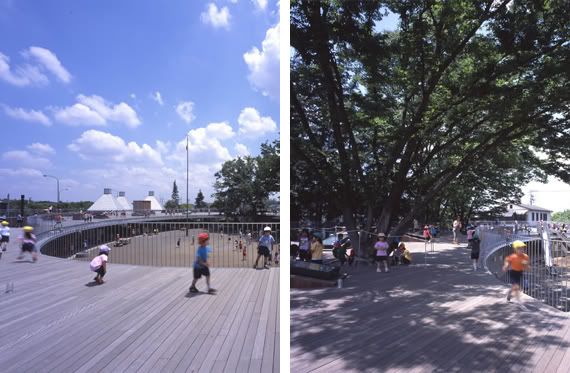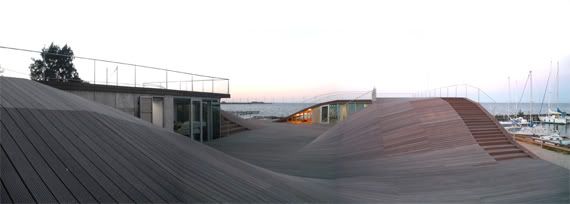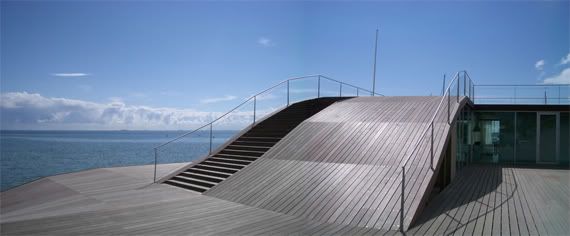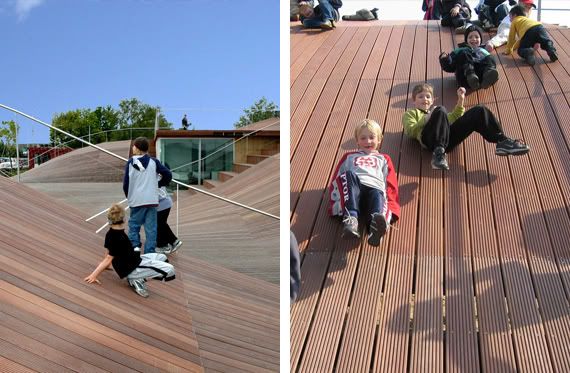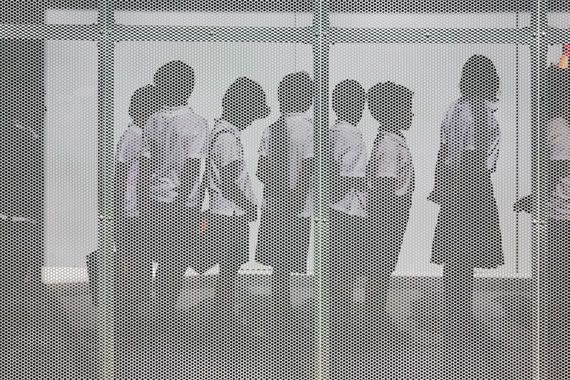 Image credits: Fernando Guerra.
Image credits: Fernando Guerra.Não era minha intenção celebrar 5 anos de actividade no blog com uma ausência tão inesperada. Alguém disse que os aniversários de blogs são tão 2004. Mas a verdade é que uma série de circunstâncias me mantiveram longe do teclado e não se trataram apenas de efeitos da gripe. Acima de tudo precisava de um pouco de espaço para reorganizar ideias sobre o que motiva a minha presença aqui.
2008 foi um ano invulgar. Durante vários meses observei o mais elevado número de visitantes alguma vez registado no blog. Diversos textos aqui publicados obtiveram bastante sucesso, tendo sido referenciados por repetidas vezes na rede. E no entanto, olhando para trás, não posso deixar de sentir que esta página foi perdendo parte do seu ponto de vista. Os blogs pessoais justificam-se pela expressão de uma voz particular, reflectindo um olhar pessoal sobre o mundo que nos rodeia. São esses os blogs que gosto de ler e definitivamente o tipo de página que gostaria de escrever também. E assim penso que tenho de refrescar um pouco as coisas. A minha agenda para 2009 é simples: escrever com mais personalidade e, se possível, com um pouco mais de estilo, passe a presunção.
Começo também a sentir que a plataforma Blogger se vai tornando demasiado restritiva para o que gostaria de fazer. Por isso penso vir a deslocar-me para um domínio diferente num futuro mais ou menos próximo. Sei que é algo de que já aqui falei e que não cumpri, mas desta vez estou a considerar seriamente uma mudança e penso dispor dos meios e do conhecimento necessários para fazê-lo como gostaria. Não se preocupem. Darei conta de eventuais mudanças durante o caminho.
Um novo ano chegou e com ele a vontade de por em marcha novas ideias e outras mais antigas. Coisas que se foram acumulando na secção de rascunhos e que agora serão trazidas à luz do dia.
Há alguns meses apresentei uma série de artigos genéricos sobre arquitectura escolar. Agora pretendo publicar uma série de projectos de escolas novas e renovadas, recentemente construídas em Portugal no âmbito de um vasto plano público para melhorar o ambiente construído das nossas instituições de ensino. Existem lições interessantes a extrair destas intervenções contemporâneas. O design de equipamentos escolares está a ser influenciado por novas ideias em busca de uma maior flexibilidade e um sentido mais comunitário de vivência e apropriação do espaço. Estas experiências são importantes, não apenas pelo seu valor individual mas por fazerem parte de um processo mais vasto de melhoria de padrões e tipologias, no estabelecimento de uma melhor prática arquitectónica num campo tão importante.
Agradeço a todos o vosso continuado apoio e interesse, desejando que apreciem este novo ano de actividade no blog. Até já!
Back to School
I had no intention of celebrating 5 years of blogging with such a strange and unannounced departure. As someone said, blog birthdays are soooo 2004 anyway. But a series of circumstances kept me away from writing and it wasn’t just the flu. Most of all, I needed some breathing space to put certain things into perspective.
2008 was an unusual year for my blog. For several months I’ve had the highest number of visitors ever registered in my blogging history. Some posts were quite successful and repeatedly referenced out on the web. And still, looking back, I can’t help feeling that it has lost some of its tone. Browsing back I often miss my own voice, and although I don’t want to do a blog about “me” I think that a personal blog is all about sustaining a particular voice in the global arena. About expressing your own take on life. Those are the blogs I like to read and most definitely the kind I want to write as well. So I think I need to refresh things a little bit. My agenda for 2009 is plain and simple: to blog with more personality and, if possible, with a bit more style.
I’m also starting to feel that the Blogger platform is becoming too narrow for what I’d like to do. So I will possibly be moving to a different domain in the near future. I know I’ve talked about it before and didn’t deliver, but this time I’m strongly considering a change and have both the tools and the know how to do it the way I want to. Don’t worry, I’ll be keeping you all posted on every step of the way.
A new year is upon us and it’s time to put things into motion with new ideas and some old ones as well. Things that have been stacking up in the drafts section and will now be brought to life.
A few months ago I’ve presented a series of generic posts about school architecture – in Portuguese only, sorry about that. Now I intend to publish a series of projects of new and renovated schools, recently built here in Portugal as part of a wide public plan to improve the built environment of our teaching institutions. There are some interesting lessons to be learned from these contemporary interventions. School design is being impacted by new ideas towards flexibility and a more communitarian appropriation of space. These experiences are important not only for their individual value but as part a wider process for the advancement of patterns and typologies and the establishment of better architectural practices in such an important area.
I hope you all enjoy this new year of blogging activity and would like to thank you for your continued interest and support. Enjoy!


